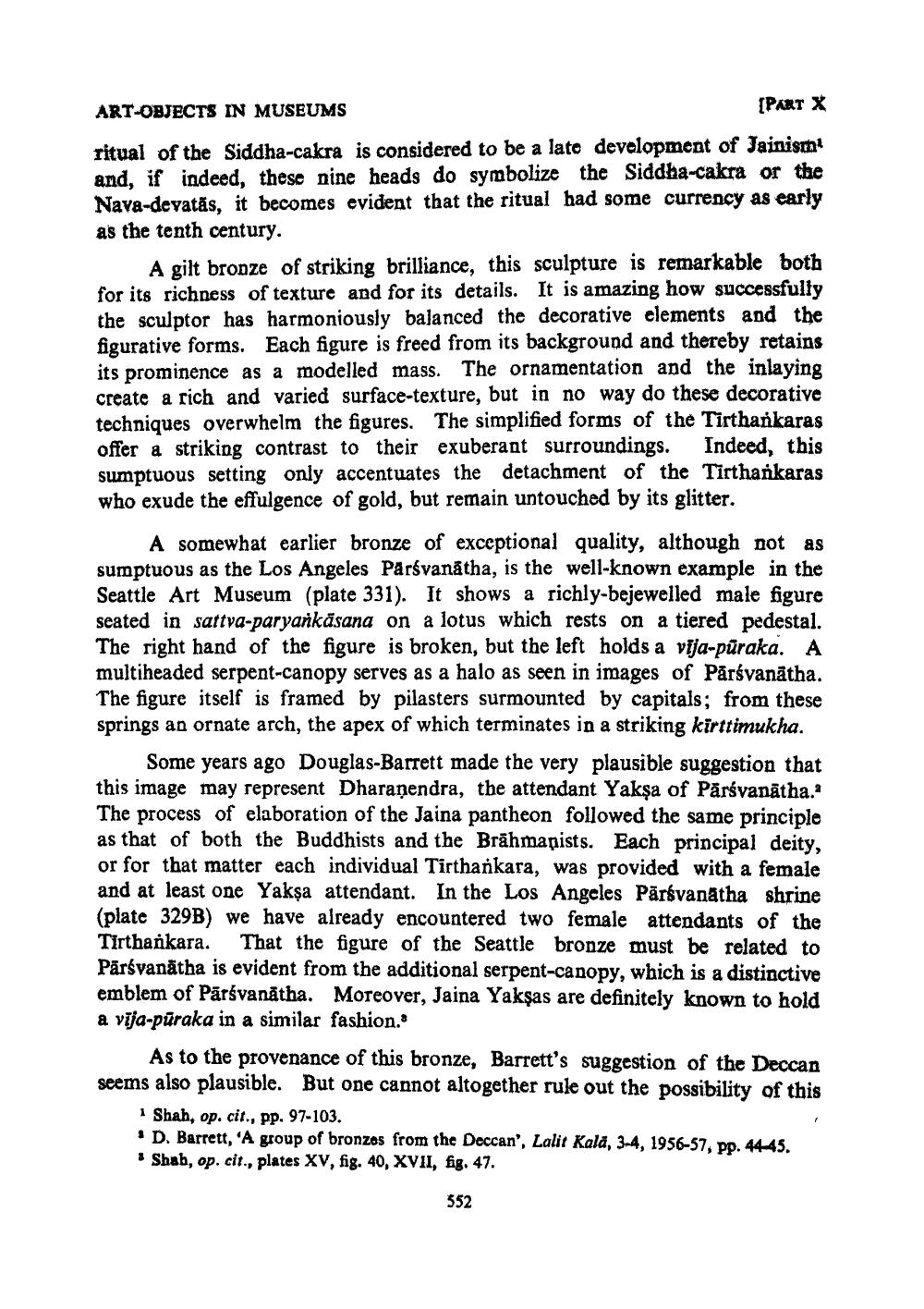________________
ART-OBJECTS IN MUSEUMS
[PART X
ritual of the Siddha-cakra is considered to be a late development of Jainism and, if indeed, these nine heads do symbolize the Siddha-cakra or the Nava-devatäis, it becomes evident that the ritual had some currency as early as the tenth century.
A gilt bronze of striking brilliance, this sculpture is remarkable both for its richness of texture and for its details. It is amazing how successfully the sculptor has harmoniously balanced the decorative elements and the figurative forms. Each figure is freed from its background and thereby retains its prominence as a modelled mass. The ornamentation and the inlaying create a rich and varied surface-texture, but in no way do these decorative techniques overwhelm the figures. The simplified forms of the Tirthankaras offer a striking contrast to their exuberant surroundings. Indeed, this sumptuous setting only accentuates the detachment of the Tirthankaras who exude the effulgence of gold, but remain untouched by its glitter.
A somewhat earlier bronze of exceptional quality, although not sumptuous as the Los Angeles Parsvanatha, is the well-known example in the Seattle Art Museum (plate 331). It shows a richly-bejewelled male figure seated in sattva-paryankāsana on a lotus which rests on a tiered pedestal. The right hand of the figure is broken, but the left holds a vija-pūraka. A multiheaded serpent-canopy serves as a halo as seen in images of Pārsvanatha. The figure itself is framed by pilasters surmounted by capitals; from these springs an ornate arch, the apex of which terminates in a striking kirttimukha.
Some years ago Douglas-Barrett made the very plausible suggestion that this image may represent Dharanendra, the attendant Yaksa of Pārsvanatha." The process of elaboration of the Jaina pantheon followed the same principle as that of both the Buddhists and the Brähmapists. Each principal deity, or for that matter each individual Tirthankara, was provided with a female and at least one Yakşa attendant. In the Los Angeles Pärsvanatha shrine (plate 329B) we have already encountered two female attendants of the Tirthankara. That the figure of the Seattle bronze must be related to Pärsvanatha is evident from the additional serpent-canopy, which is a distinctive emblem of Pārsvanatha. Moreover, Jaina Yaksas are definitely known to hold a vija-pūraka in a similar fashion."
As to the provenance of this bronze, Barrett's suggestion of the Deccan seems also plausible. But one cannot altogether rule out the possibility of this
1 Shah, op. cit., pp. 97-103.
D. Barrett, 'A group of bronzes from the Deccan', Lalit Kala, 3-4, 1956-57, pp. 44-45. Shab, op. cit., plates XV, fig. 40, XVII, fig. 47.
552




